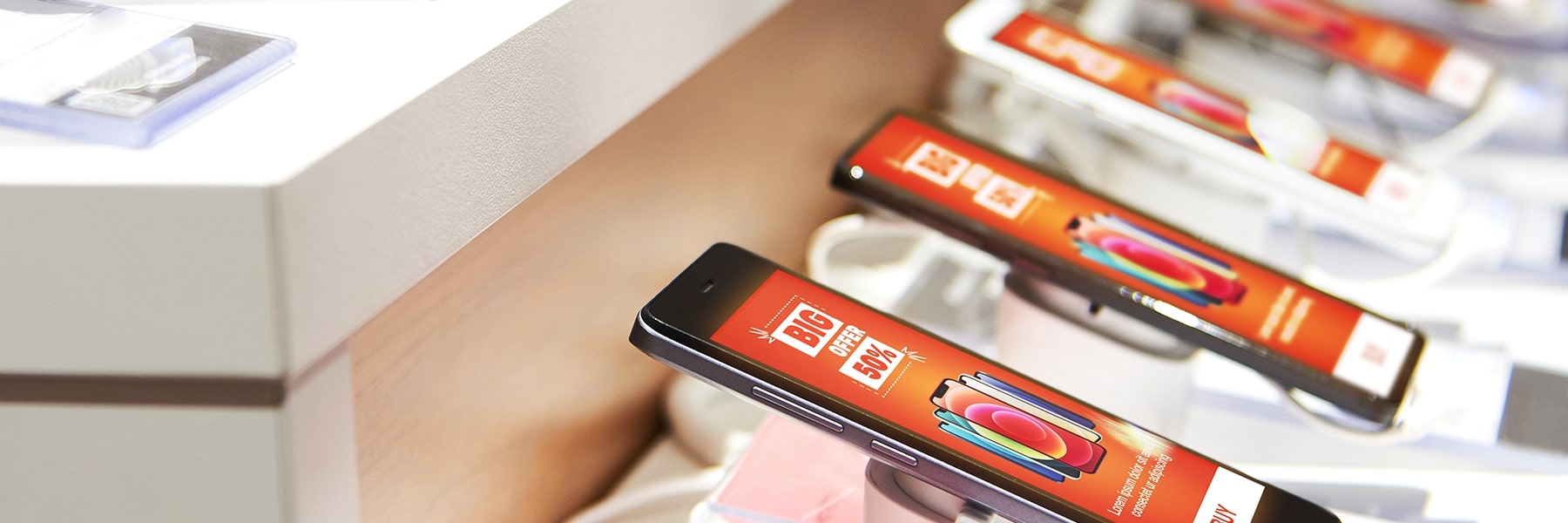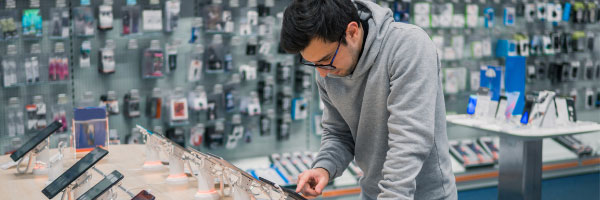How Retailers Benefit from Electronic Shelf Labels
Anyone who has worked in a retail setting knows the pain of posting product prices. While most companies have gotten away from putting price stickers on individual items, store employees are still responsible for getting shelf labels onto displays. Every time those displays are rearranged or an item goes on sale, employees spend hours printing and posting the updated information.
The current paper-based price labeling system isn’t ideal for consumers either. Traditional shelf labels are labor-intensive, which introduces the likelihood of human error. Far too often, shoppers skip a purchase because they don’t realize the price has dropped, or they get to the counter with their basket only to discover shelf labels were incorrect. They have the choice of paying more or abandoning the item at the register.
Electronic shelf labels take the pain out of ensuring price label accuracy. Some US retailers have already introduced this technology, and many more are planning to adopt it in the coming months. After all, consumers already come equipped with their mobile devices, and they are accustomed to using them while shopping. Adding electronic shelf labels takes advantage of existing expectations around technology to reduce the workload for retail employees and enhance the customer experience.
Increasing Retail Efficiency with Electronic Shelf Labels
Margins are growing more narrow every year as increased competition pushes prices down. Meanwhile, payroll remains a significant expense, even with staffing slashed to the bare minimum. There simply isn’t time to waste with labor-intensive tasks that fail to add value. Placing and updating traditional shelf labels falls squarely into that category.
Electronic shelf levels support the optimization of retail operations. Price changes can be managed from a central office and updated in real-time, without any need for retail associates to print and post the information. Employees can focus on value-added tasks instead. That saves time and increases agility – a must-have in the retail world. Need to match a competitor’s price? No problem. The change can be made with the click of a button.
In addition to simplifying pricing, electronic shelf labels offer retailers new opportunities to maximize in-store sales. Some types of electronic shelf labels monitor consumer traffic around a product – including how long visitors stay in the vicinity. Others can be paired with point-of-sale and inventory management systems to show consumers when out-of-stock items will be available again. They may offer QR codes so that shoppers can order online immediately, reducing the risk of lost sales due to empty shelves or fulfillment gaps.
Reducing Waste with Electronic Shelf Labels
Many companies are working to reduce their impact on the environment by reducing waste, increasing the use of renewable energy, and ensuring responsible use of resources. Electronic shelf labels work within green strategies because they eliminate the need to print paper price cards. No more paper waste – and as an added perk, retailers save on the costs associated with printing those cards.
Enhancing the Customer Experience with Electronic Shelf Labels
Electronic shelf labels don’t require a lot of human intervention, so they tend to be more accurate than their paper-based counterparts. When the rare error is discovered, it is fast and easy to correct across all retail locations from a centralized management point. Consumers appreciate price label accuracy, so that aspect alone tends to enhance their experience.
However, that’s not all that electronic shelf labels can do. When paired with mobile devices, shoppers can enjoy an omnichannel brand experience. There is consistency between what consumers see in brick-and-mortar locations, what they see online, and what the brand communicates. Through electronic shelf labels, shoppers can engage with their favorite products in new ways. That deepens their relationship with specific brands, as well as the retail stores they visit.
Certain electronic shelf labels take things to the next level by integrating with apps on smartphones and mobile devices. The apps offer product finder capabilities that guide shoppers through the store to their desired item. This reduces in-store friction and mitigates the possibility that a shopper will leave the store without making their intended purchase.
Electronic Shelf Labels for Smartphone Retailers
ViewSpot from Smith Micro Software is the retail display management platform that enables wireless carriers and other smartphone retailers to retire paper price cards permanently. By installing ViewSpot on in-store demo devices, wireless carriers can transform these devices into electronic shelf labels and much more. Not only does ViewSpot display up-to-date pricing and product information right on the screen of the demo device, it also enables demo devices to play synchronized promotional content to entice shoppers to engage.
ViewSpot also provides wireless carriers and other smartphone retailers with valuable analytics based on in-store customer interactions, and device health reporting that provides information on battery health, Wi-Fi connectivity, and other essential information. Learn more about how ViewSpot can benefit your retailer operations! www.smithmicro.com/viewspot






